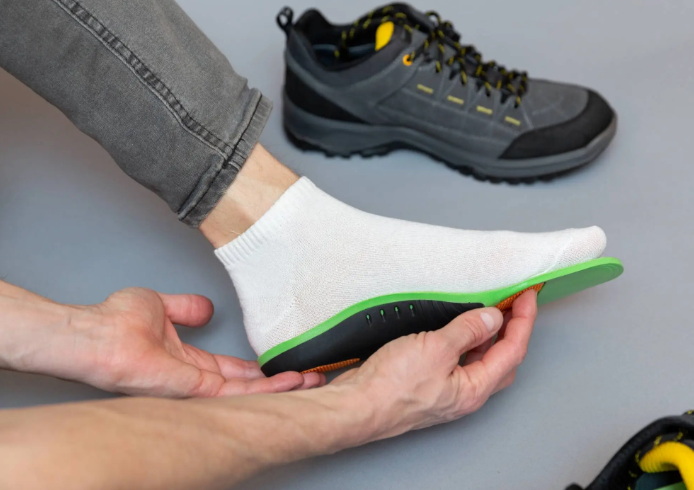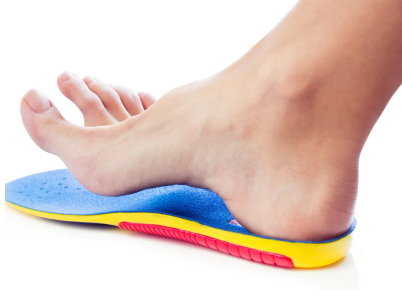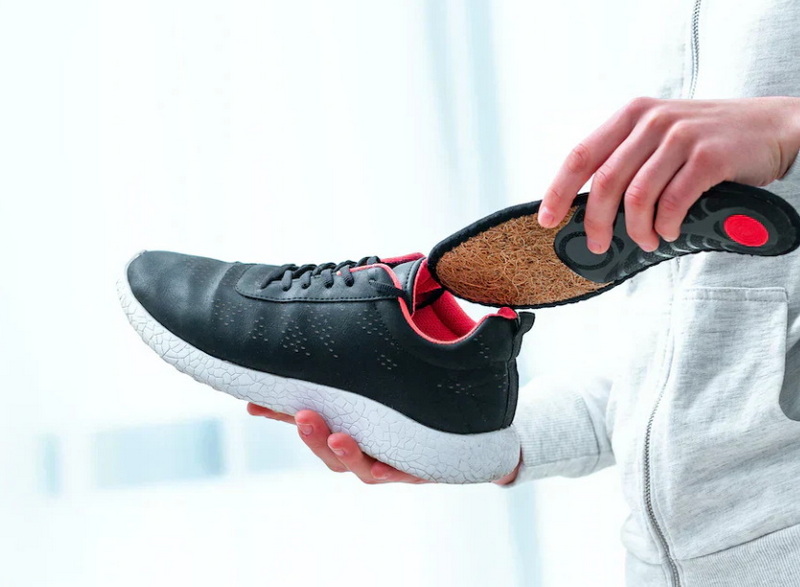Views: 222 Author: Edvo Publish Time: 2025-10-20 Origin: Site











Content Menu
● Understanding Orthotic Insoles
>> How Orthotics Help Your Body
>> Common Conditions Orthotic Insoles Help With
● Step-By-Step Guide: How To Put Orthotic Insoles in Shoes
>> Step 1: Remove the Existing Shoe Insoles
>> Step 2: Compare and Trim If Necessary
>> Step 3: Choose Shoes With Proper Depth
>> Step 4: Insert the Orthotic Insoles Properly
>> Step 5: Test Comfort and Balance
● Tips for Wearing Orthotic Insoles
● Choosing the Right Orthotic Insoles
● Caring for Your Orthotic Insoles
● Advanced Fitting Tips for Maximum Comfort
● When To Replace Orthotic Insoles
● Advantages of Using Orthotic Insoles Daily
● FAQ
>> 1. How do I know if my orthotics fit properly?
>> 2. Can orthotics fit in all types of shoes?
>> 3. Should I wear socks with my orthotic insoles?
>> 4. How long does it take to get used to orthotics?
>> 5. Do orthotic insoles provide instant pain relief?
Orthotic insoles are more than just comfort accessories — they are essential for maintaining good posture, relieving pain, and improving balance while walking or standing. Whether you experience foot fatigue, joint pain, or you simply want extra cushioning for daily comfort, orthotic insoles can significantly enhance your shoe's performance. However, to truly benefit from them, you need to know how to place them correctly in your shoes.
This comprehensive guide explains everything you need to know — from removing and trimming existing insoles to fitting, testing, cleaning, and caring for your orthotics. You'll also find expert advice on choosing the right type for your feet and avoiding common mistakes along the way.

Orthotic insoles are specially designed inserts that go inside your shoes to correct alignment problems and provide extra support. They help reduce pressure on certain areas of your feet while distributing body weight evenly. You can buy prefabricated orthotics available in standard sizes or get custom-made orthotics prescribed by a podiatrist.
When fitted properly, orthotics can improve how your entire body functions. They help keep your ankles, knees, hips, and spine aligned, which improves posture and reduces overall strain. Many users report that wearing quality orthotics reduces fatigue during long work hours, workouts, or travel.
- Plantar fasciitis
- Flat feet and fallen arches
- Overpronation and supination
- Heel pain or heel spurs
- Shin splints and knee pain
- Posture imbalance
- Diabetic foot stability
Understanding how to insert orthotic insoles is critical to maximizing comfort and performance. Follow these easy steps to ensure a secure, comfortable fit.
Most shoes come with standard foam insoles. Remove these by pulling gently from the heel to the toe. This makes room for your orthotics and allows them to sit properly at the bottom of your shoes. If your shoes don't have removable insoles, consider a thinner orthotic insert designed for tighter footwear.
Place your new orthotic on top of the shoe's original insole. Check alignment along the heel and toe. If your orthotic is slightly larger, you can trim the toe area using the old insole as a guide. Cutting only the front section ensures you don't alter the arch or heel support — two of the most critical zones for balance and comfort. Always cut gradually and recheck the fit before final trimming.
Orthotics need space to do their job effectively. Deep shoes, like athletic sneakers, casual loafers, or hiking boots, typically provide enough room. Avoid narrow, pointed, or ultra-flat shoes that can distort the insole's shape and decrease comfort. For dress shoes or heels, consider low-profile orthotics specially made for slimmer designs.
Slide the orthotic into the shoe heel-first, pressing it down gently to lay flat. Make sure there are no wrinkles, folded edges, or bulging spots. A misaligned or raised section can cause friction and discomfort later during walking.
Put on your shoes and walk a few steps on a firm surface. Pay attention to how your feet feel. Properly placed orthotics provide a stable, cushioned feel with even pressure distribution. If your shoes feel too tight or the arch support pinches, remove the orthotic and recheck trimming or placement.

Transitioning to orthotics can take time. The following guidelines will help you get used to them smoothly:
1. Break Them In Gradually: Start by wearing them 1–2 hours daily, increasing use by an hour each day until full-day comfort is achieved.
2. Use Supportive Footwear: Always pair your orthotics with sturdy shoes offering firm heel counters and cushioning.
3. Maintain Hygiene: Remove your insoles regularly, wipe them with a damp cloth, and allow them to air dry overnight.
4. Avoid Heat Exposure: Keep orthotics away from direct sunlight, dryers, or radiators to prevent warping.
5. Replace Periodically: Typically, orthotic insoles last between 12 and 18 months depending on frequency of use.
Users who follow these steps usually notice long-term comfort improvements, better walking posture, and reduced fatigue.
Many people unknowingly reduce the effectiveness of their orthotics by failing to install or use them correctly. Avoid these frequent mistakes:
- Forcing the fit: Never jam orthotics into tight shoes. It can distort shape and damage both the insole and shoe.
- Cutting too much: Over-trimming the toe section compromises support structure.
- Ignoring discomfort: Minor adjustment discomfort is normal, but persistent pain means incorrect fit.
- Wearing only one: Both feet need balance — always wear orthotics as a pair.
- Walking without socks: Socks minimize friction, reduce moisture, and extend insole life.
The right insole depends on your lifestyle and specific foot requirements. Selecting correctly ensures better performance and durability.
- Arch Support Insoles: Designed for flat feet or low arches to provide structural lift.
- Cushion Insoles: Ideal for people with sensitive feet or long hours of standing.
- Heel-Cup Orthotics: Provide relief from heel spurs or plantar fasciitis.
- Full-Length Orthotics: Cover the entire shoe base for maximum stability.
- Sports Orthotics: Engineered for shock absorption and extra heel support during running or high-impact activities.
- Custom Orthotics: Molded from your foot shape and prescribed for specific medical or structural issues.
No matter which style you choose, ensure they complement your shoe type and activity level. For athletic use, always go for breathable, high-resilience materials like EVA foam or PU gel.
Because orthotics interact directly with sweat and friction, regular cleaning and care become vital for extending their lifespan.
1. Clean Gently: Use mild soap and warm water on a cloth. Avoid submerging the insole completely.
2. Air Dry Naturally: Let them dry indoors overnight. Never expose to direct heat.
3. Control Odor: Sprinkle baking soda or use natural deodorizing sprays occasionally.
4. Check Wear Signs: Replace once arch support flattens or the material becomes compressed.
5. Alternate Pairs: Having two sets prolongs life and ensures one remains fresh at all times.
Proper care also keeps your shoes odor-free and your daily walking experience consistent.
If you use custom-made orthotics, follow your podiatrist's fitting instructions precisely. These advanced inserts often include additional components like heel lifts or adhesive pads that must be positioned correctly. For runners or workers on their feet all day, combining orthotics with shock-absorbing footwear can reduce stress on knees and back.
You can also use double-layer socks during the early adjustment period to minimize friction and allow smoother adaptation. For people using orthotics in multiple shoe types, label them clearly or buy compatible versions for each footwear category.
Even premium orthotics will eventually degrade. Weak arch support, compressed cushioning, or returning foot pain are signs you need replacements. Typically, active users — such as athletes or workers standing long hours — might need to replace insoles every 9 to 12 months. For casual users, every 18–24 months is sufficient.
Examine your orthotics monthly for cracks, thinning, or odor. Replacing them regularly ensures consistent performance and proper biomechanical balance.
- Enhances walking comfort by reducing stress on feet
- Improves posture and spinal alignment
- Reduces fatigue during long work shifts
- Provides effective pain management for chronic foot conditions
- Prevents future foot deformities and injuries
- Boosts shoe durability by evenly distributing pressure
Whether you are an athlete, a professional worker, or someone recovering from foot conditions, orthotics play a key role in your daily mobility and long-term health.
Putting orthotic insoles into your shoes the right way is not complicated, but it requires patience and attention to detail. By following the correct steps—removing the old insole, trimming carefully, inserting heel-first, and breaking them in gradually—you can enjoy noticeable improvements in comfort, stability, and posture.
Remember to maintain cleanliness, choose compatible shoes, and replace your insoles when they lose support. Once fitted properly, orthotic insoles transform your footwear into a foundation of support, ensuring every step feels right, balanced, and pain-free.

Your orthotics fit correctly if they feel snug inside the shoe without bulging or sliding. You should feel even arch support without tightness at the toes or heel.
Not all shoes accommodate orthotics. The best pairs include sports shoes, walking shoes, or boots with removable insoles. For narrow or formal footwear, choose thin-profile versions designed for limited space.
Yes. Socks help reduce moisture, prevent slipping, and keep your insoles cleaner for longer. Cotton or breathable fiber socks work best.
Usually, 1 to 2 weeks of gradual use are enough. Start with short wear periods and extend time daily until full comfort is reached.
Many users experience noticeable relief within a few days, while others might take longer as muscles and joints realign to proper posture.